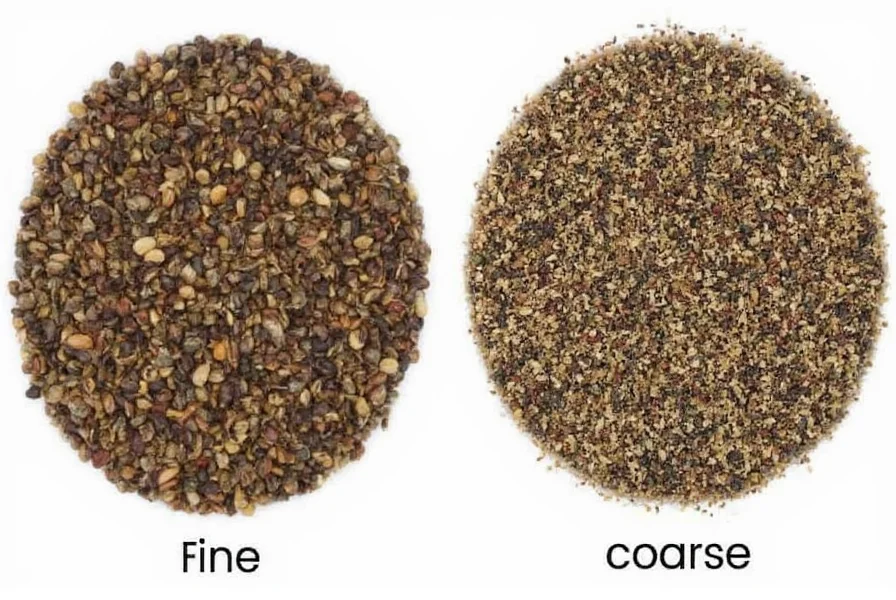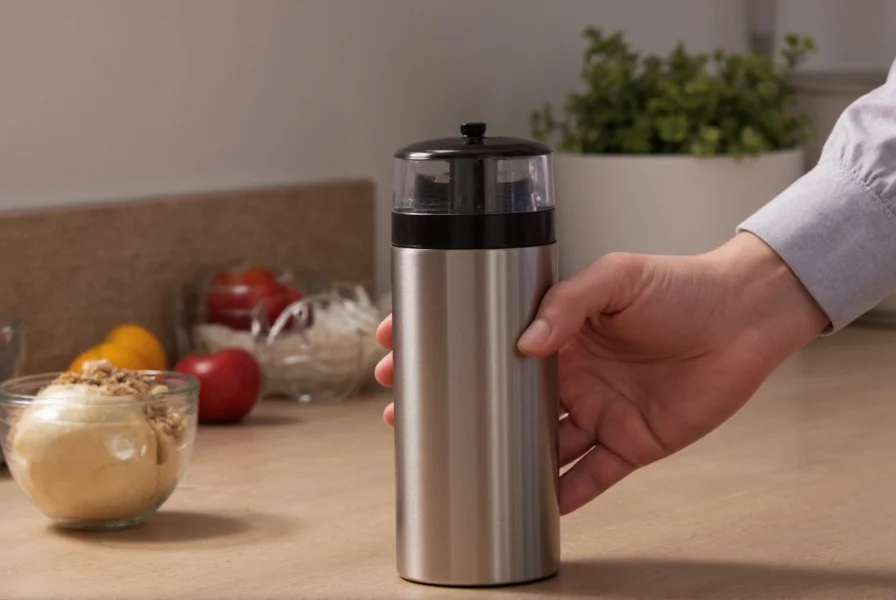Modern automatic pepper grinders have transformed kitchen seasoning with their convenience and precision. Unlike traditional manual mills requiring physical effort, these electric models deliver consistent results with minimal user input. Understanding their mechanics and features helps home cooks and professional chefs make informed decisions about incorporating this tool into their culinary workflow.
How Automatic Pepper Grinders Function
Automatic pepper grinders operate through a simple yet effective mechanism. When activated, an electric motor rotates a grinding mechanism—typically made of ceramic, stainless steel, or carbon steel—that crushes peppercorns to the desired consistency. The grinding mechanism sits between two burrs that can be adjusted to control particle size.
Most models feature a transparent or semi-transparent chamber that allows users to monitor peppercorn levels. The grinding process begins when the user presses a button or switch, activating the motor for 2-5 seconds depending on the desired amount. Advanced models include sensors that automatically stop grinding when the container is full or when the user releases pressure.
Key Features to Evaluate
When selecting an automatic pepper grinder, several critical features determine performance and usability:
| Feature | Importance | Considerations |
|---|---|---|
| Grinding Mechanism Material | ★★★★★ | Ceramic maintains sharpness longer; stainless steel offers durability; carbon steel provides aggressive grinding |
| Grind Size Adjustability | ★★★★☆ | Look for precise calibration from fine powder to coarse cracks |
| Power Source | ★★★★☆ | Rechargeable models reduce battery waste; battery-operated offer immediate use |
| Capacity | ★★★☆☆ | Larger chambers reduce refill frequency but may compromise freshness |
| Ease of Cleaning | ★★★☆☆ | Dishwasher-safe components simplify maintenance |
Automatic vs. Manual: Objective Comparison
While manual pepper mills have their place in culinary traditions, automatic models offer distinct advantages for specific scenarios:
- Consistency: Automatic grinders deliver uniform particle size throughout use, critical for professional cooking techniques
- Accessibility: Ideal for users with limited hand strength or dexterity issues that make manual grinding difficult
- Speed: Grinds peppercorns 3-5 times faster than manual operation during meal preparation
- Reduced Contamination: Minimizes hand contact with seasoning, maintaining food safety standards
However, manual mills generally preserve peppercorn freshness longer due to less exposure to air during storage. The best approach for many kitchens involves having both types available for different culinary situations.
Common Misconceptions Addressed
Several myths persist about automatic pepper grinders that deserve clarification:
"Automatic grinders heat peppercorns during grinding" - While friction does generate minimal heat, quality models maintain temperatures well below the threshold that would compromise essential oils (typically under 40°C/104°F).
"They can't achieve fine grinds" - Modern adjustable mechanisms can produce everything from coarse cracks to near-powder consistency, rivaling manual mills.
"Battery operation affects grinding consistency" - Reputable models maintain consistent motor speed until batteries are nearly depleted, with many featuring low-battery indicators.

Selecting the Right Model for Your Needs
Choosing the best automatic pepper grinder depends on your specific kitchen requirements:
For Home Cooks: Prioritize ease of use and compact design. Look for models with one-touch operation and sufficient capacity for regular family meals. Rechargeable options reduce long-term costs and environmental impact.
For Professional Kitchens: Focus on durability, consistent performance under heavy use, and quick-refill mechanisms. Stainless steel grinding mechanisms withstand commercial kitchen demands better than ceramic.
For Special Dietary Needs: Consider models with separate chambers for different peppercorn varieties (black, white, pink) to accommodate specific flavor profiles without cross-contamination.
Maintenance Practices for Longevity
Proper care extends the life of your automatic pepper grinder significantly:
- Clean the grinding mechanism every 2-3 months by running uncooked rice through it to remove residue
- Store with peppercorns only when in regular use; empty for extended storage periods
- Use whole peppercorns exclusively—pre-ground pepper clogs mechanisms
- Replace batteries promptly when grinding slows to prevent motor strain
- Wipe exterior with damp cloth; avoid submerging motor components in water
Regular maintenance prevents the common issue of inconsistent grinding that often leads users to believe their device is defective when simple cleaning would resolve the problem.
Practical Applications in Culinary Settings
Automatic pepper grinders excel in specific culinary scenarios where precision and timing matter:
- Finishing Dishes: Precise control when adding pepper to delicate dishes like eggs or fish
- Recipe Development: Consistent measurements for testing and documenting recipes
- Entertaining: Effortless seasoning when hosting multiple guests simultaneously
- Specialty Cooking: Achieving specific grind sizes required for particular cuisines
The most effective use combines automatic convenience with culinary knowledge—understanding when freshly ground pepper enhances a dish versus when pre-ground suffices.
Frequently Asked Questions
Can I use an automatic pepper grinder for salt?
Most automatic pepper grinders shouldn't be used for salt as moisture can corrode the internal mechanisms. Look for models specifically designed as dual-purpose salt and pepper grinders with corrosion-resistant components if you need this functionality.
How often should I replace peppercorns in my automatic grinder?
For optimal flavor, replace peppercorns every 2-3 months in automatic grinders. The enclosed design preserves freshness longer than manual mills, but essential oils still degrade over time. Store unused peppercorns in an airtight container away from light and heat.
Why does my automatic pepper grinder stop working suddenly?
Sudden stoppage usually indicates either depleted batteries or peppercorn residue buildup. First replace batteries with fresh ones. If that doesn't resolve the issue, disassemble and clean the grinding mechanism according to manufacturer instructions. Avoid using liquid cleaners directly on motor components.
Do automatic pepper grinders affect pepper flavor compared to manual grinding?
When properly maintained, automatic grinders produce identical flavor profiles to manual mills at the same grind setting. The key factor is using whole peppercorns and ensuring the grinding mechanism remains clean and sharp. Some high-end models even preserve flavor better by minimizing heat generation during operation.
What's the ideal grind size for different cooking applications?
Fine grind works best for sauces and dressings where pepper should dissolve completely. Medium grind suits most general cooking applications. Coarse grind provides maximum flavor impact for steak seasoning and dishes where visible pepper bits are desirable. The most versatile setting for everyday use is medium-fine, which works across most culinary applications.











 浙公网安备
33010002000092号
浙公网安备
33010002000092号 浙B2-20120091-4
浙B2-20120091-4